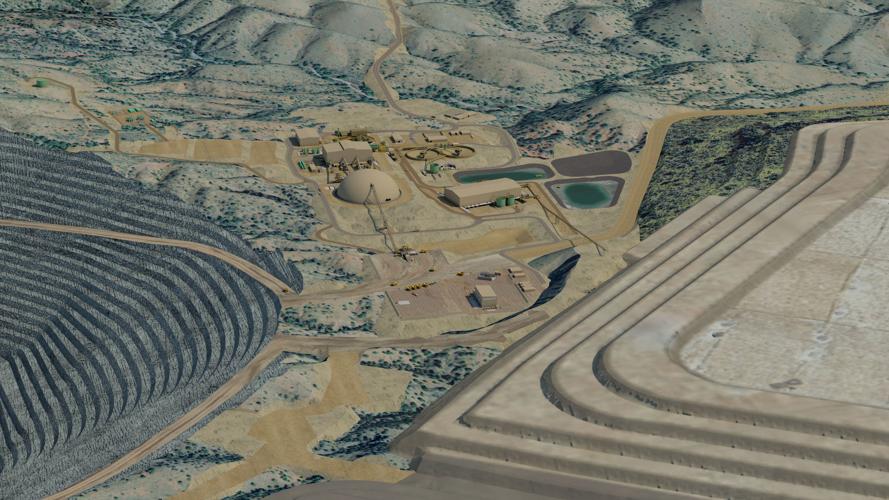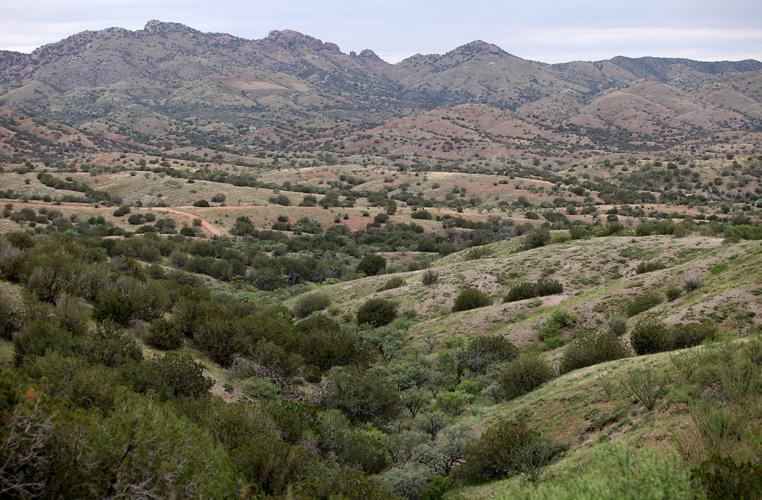The company that hopes to build the Rosemont Mine has filed claims with two agencies that could give it a legal route around a federal court ruling that blocked mine construction.
Hudbay Minerals Inc. filed hundreds of new legal claims in the past 10 days that could allow it to dump the mine’s waste rock and tailings on public land after all. The company isn’t offering a detailed explanation.
But it’s clear that the claim filing could serve as a backup strategy if the company fails to overturn the July 31 court ruling that stopped its $1.9 billion construction project for Rosemont.
The new claims, known in federal rules as “millsite” claims, are intended for use on land without valuable minerals.
That’s key because the court ruling was hinged on the judge’s conclusion that Hudbay needed to prove — and had not — that there were valuable minerals on all of the same land, under its previously filed, conventional (non-millsite) mining claims.
People are also reading…
U.S. District Judge James Soto of Tucson ruled that the Forest Service erroneously accepted the validity of Rosemont’s conventional mining claims to use the public land, under the federal 1872 Mining Act, for waste rock and tailings disposal.
Hudbay recorded 772 claims Thursday at the Pima County Recorder’s Office of millsite claims at the Rosemont site, County Recorder F. Ann Rodriguez said Friday afternoon.
The company also formally filed the claims on Oct. 17 with the U.S. Bureau of Land Management, which processes such claims for projects like Rosemont’s that are on Forest Service land.
The latest claims cover an approximate area of 3,500 acres, Hudbay said in a statement Friday evening. The copper mine, slated for the Santa Rita Mountains southeast of Tucson, would also include an open pit covering 955 other acres on both federal and private land. The pit would be more than a half-mile deep and more than a mile in diameter.
“The area covered by these claims is directly adjacent to the mine and is intended to be used for waste rock, the company’s state-of-the-art tailings facility and other support facilities related to Rosemont’s operations,” Hudbay said.
The company intends to dispose of 1.9 billion tons of waste rock and tailings on 2,447 acres, Soto’s ruling said.
The filing comes a little less than three months since Soto ruled — one day before Hudbay was scheduled to start construction — that work on the mine can’t begin. Soto said the Forest Service’s approval of the mine in June 2017 was “arbitrary and capricious.”
Hudbay has said it intends to appeal that ruling to the 9th Circuit Court of Appeals. On Aug. 30, it also formally asked Soto to vacate or revise his ruling — a request on which Soto has yet to rule. The company said that was its first step toward filing an appeal.
Now, “while the appeal process continues, Hudbay is engaged in an on-going process of maintaining and updating its mining claims as we look to move the Rosemont project forward,” the company’s statement on Friday said. “The filing of the claims has no effect on the pending litigation or appeal process. Hudbay remains fully committed to appealing the court ruling.”
But the legal purpose of the new millsite claims shows that the company could try to use them as a backstop if its appeal failed.
Under federal laws and regulations, the millsite claims are supposed to be used to support mining operations carried out on land for which conventional mining claims have been filed. The BLM says the uses for millsite claims can include impoundments of tailings and waste dumps — precisely what Hudbay said it wants to do on that land.
But to be valid, millsite claims are only supposed to be located on what BLM calls “non-mineral land.” Yet Hudbay had previously filed mining claims on that same land. And, according to Soto’s ruling, mining claims must be placed on land containing valuable minerals.
While the 1872 Mining Law grants exclusive property rights to miners who have valid, unpatented mining claims, “there must be a valuable mineral deposit underlying the claim,” Soto wrote.
But if no valuable mineral deposit lies beneath that claimed land, “the unpatented mining claims are completely invalid under the Mining Law of 1872, and no property rights attach to those invalid unpatented mining claims,” Soto wrote.
If that ruling stands, Hudbay, theoretically, could then use the millsite claims to legally justify burying its waste rock and tailings on that land.
For different reasons, Hudbay’s millsite claim filing didn’t come as a surprise to John Leshy, a former U.S. Interior Department solicitor who has worked with attorneys who filed the suit against Rosemont, and John Lacy, a private mining lawyer and director of the University of Arizona’s Global Mining Law Program.
Leshy, a retired law professor who has written a book on the 1872 mining law, said the claim filing shows Hudbay’s concern about the weakness in its legal position.
He noted that Soto even anticipated such a filing in a footnote to his ruling. The footnote said the 1872 Mining Law specifically provides “for the use of non-contiguous, non-mineral land to be used in support of mining operations.”
Hudbay’s theory of filing mining claims for that ground was that it contained valuable minerals. “Now they do a 180 and claim it’s non-mineral, which they have to do to file mill site claims for it. That looks awkward to say the least,” Leshy said.
Lacy, however, said that while Hudbay could be giving itself a backup plan with the latest claim filings, the company’s step is “totally appropriate” and typical for what a mining company normally does when it files millsite claims on public land. As a private mining attorney, Lacy has represented “probably more than 10 companies” that filed millsite claims, he said.
He said he doesn’t see Hudbay’s action as an admission of legal weakness.
“I totally agree with their process,” Lacy said. “I think the appropriate step for them would be the location of millsites — once you show that the ground is non-mineral in character, that it won’t support mining claims, and that your intent was to use that land for surface facilities.”
Contact reporter Tony Davis at tdavis@tucson.com or 806-7746. On Twitter@tonydavis987





















